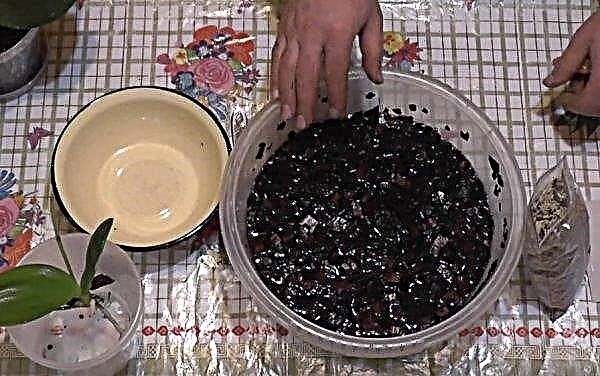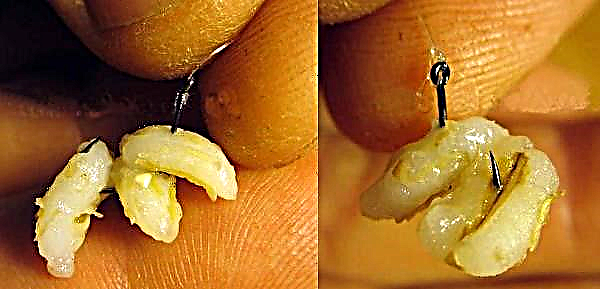Ficus is an indoor evergreen plant that has a decorative function in the room, and also has medicinal properties, which is why it is often used in the manufacture of medicines. Ficus has many forms, among which, in addition to the evergreen, there are also some deciduous. Its varieties are distinguished by the color of the leaves - in some it is monophonic, in others it is motley. Indoor flower is easy to plant at home, if you follow the basic rules of planting and care, which will be discussed in the article.
Basic Ficus Care
Ficus can be called unpretentious, however, like all indoor plants, it needs care and the basic rules of care:
- A change of residence negatively affects the well-being of the plant. For him, you need to select a place in advance and try not to move it and rotate it anymore. In summer, it is allowed to take the flower out into the fresh air, for example, onto a sunny balcony or loggia.
- Poorly tolerates drafts, but at the same time loves fresh air and airing.
- If possible, the temperature should be kept constant. From a sharp temperature drop, the ficus can get sick.
- Demanding on watering. It prefers abundant watering in the hot season, however, between the irrigations, the upper part of the soil should dry by 2-3 cm. In winter, watering should not be so often, preventing stagnation of moisture.
- During the growing season in spring and summer, ficus needs feeding. It is applied approximately every two weeks. In winter, the indoor flower is not fed. For fertilizing, any fertilizer for decorative and deciduous plants is suitable.
- From October to February, the ficus begins to rest. However, if the house is warm and there is additional illumination, then the plant continues to grow, although not so fast. In any case, during this period it is required to reduce watering and lower the temperature.
- It needs regular hygiene, because a dense dust layer on the leaves adversely affects metabolic processes. Leaves can be wiped with a damp sponge on both sides, and in the summer, once or twice a month, the plant can be bathed under a warm shower.
- In order to spray and water, you can use only standing, soft and warm water. Hard chlorinated tap water leaves streaks of salt on the sheets.
- Periodically, the ficus needs to be transplanted when the pot becomes small for him. This is evidenced by the completely earthen combs braided by the roots.

Optimal growing conditions
Ficus can be easily grown at home.
It will grow quickly and maintain a healthy decorative appearance, if the following growing conditions are observed:
- Temperature. In the summer - from + 25 ° to + 30 ° С, in the winter - from + 16 ° to + 20 ° С. The temperature minimum at which the plant survives is + 15 ° C for ficuses with variegated leaves, + 10 ° C for most species with monophonic foliage. The plant does not tolerate hypothermia, so it is better not to leave the pot in a cold place, for example, on the floor or on the windowsill in autumn and winter.
- Lighting. Bright but scattered. He loves a lot of light, but does not tolerate direct sunlight. Some forms with plain dark leaves can live in light partial shade. With a lack of lighting, it loses color and begins to discard sheets.
- Air humidity. Ideally - up to 70%, but 50% is acceptable. In summer, the plant prefers high humidity. In winter, if the room is warm and dry, it needs additional regular spraying and bathing in the shower.
- Soil moisture. The plant does not tolerate stagnation of water, but watering loves plentiful and regular. After each watering, the soil on top should dry by 2-3 cm, and for ficuses that have grown large and reached the size of a tree, these values increase to 6-7 cm. Water from the pan must be drained after each watering, otherwise the soil will be waterlogged, which will rot the root system.
Important! The higher the temperature in the room in winter, the more you need ficus light and spraying, as the growth processes continue. To do this, organize additional lighting.
How to plant ficus at home
Ficus planting technology involves a number of preparatory work, including the preparation of a suitable pot, soil and equipment, and also implies specific planting dates.
Landing time
Ficus planting is necessary from the beginning of the active vegetation period. This time falls in the spring. The plant develops and grows rapidly. The best planted specimens planted during the spring - from March to May. However, in summer, landing is also acceptable. The main thing is not to try to propagate the indoor flower during the dormant period, when all metabolic processes are slowed down.
Did you know? Known forms ficus with edible fruits. This is a famous fig. — otherwise it is also called a fig tree or fig tree.
Preparatory work
Before you start planting a young ficus in a pot, you must first prepare all the necessary tools for planting.
Necessary tools
For planting, you need to prepare the following inventory:
- pot;
- earth mix;
- warm, settled water;
- drainage - expanded clay, pieces of polystyrene foam, pebbles, cracked brick, small pebbles.

To facilitate planting and ensure cleanliness, you can use additional equipment:
- gloves
- oilcloth;
- apron.
Did you know? Before they started the synthetic production of rubber, it was extracted from ficus! Namely, from rubber ficus, containing rubber admixture in milk juice.
Pot selection
It is very important in which pot the plant will be planted, because it depends on its size, material and shape how well the ficus will feel. Since ficus is thermophilic and does not tolerate hypothermia, it is best to choose a container made of plastic or clay for it. In ceramic and glass pots, the plant will freeze. Plastic pots do not always look aesthetically pleasing. However, this problem can easily be solved with the help of a cache-pot, which, moreover, can also be changed at will, choosing a suitable decoration for the surrounding interior. The shape of the pot is also important: it must be deep enough and high so that from the ends of the roots to the drainage laid at the bottom, at least 2 cm remains. A small and wide pot will not work, as the roots of the plant will grow in depth. The size of the first flowerpot for ficus should be very small. In too large a capacity, he will be uncomfortable, because of which growth will slow down.
The shape of the pot is also important: it must be deep enough and high so that from the ends of the roots to the drainage laid at the bottom, at least 2 cm remains. A small and wide pot will not work, as the roots of the plant will grow in depth. The size of the first flowerpot for ficus should be very small. In too large a capacity, he will be uncomfortable, because of which growth will slow down.
Choosing a pot according to size, you can be guided by the following criteria:
- take a pot whose diameter does not exceed 10 cm;
- choose a pot individually for the plant, measuring the distance from the roots to the walls — it should be 2.5 cm;
- measure the width of the root system and pick up a pot that is 2-3 cm in diameter larger than the width of the roots.
Important! The soil should be neutral or slightly acidic, with a pH level of 5.5 to 7.
What should be the soil
The soil for the ficus should be light, loose, breathable, rich in nitrogen and fertile. He does not like heavy, dense and greasy soil.
The optimal composition of the soil mixture:
- sheet earth;
- peat;
- coarse river sand.
All ingredients for the soil mixture must be mixed in equal amounts. As a result, you will get light and airy earth. When the ficus grows, it is recommended to add another part of the turf soil to the substrate. When filling the earth mixture, place it so that there is a drainage layer at the bottom, the main part consists of soil, and you can sprinkle the soil on top with a layer of clean sand - this will provide additional permeability. If you do not have the opportunity to prepare the soil mixture yourself, in the flower shop you can buy ready-made soil from the manufacturer under the name "Ficus" or "Palm". Some manufacturers prepare specifically for ficus a substrate that does not contain humus, which is called "landless." In this soil, plants can not only be transported, but also suitable for growing. Its only drawback is a small amount of nutrients. Therefore, if your choice fell on just such a soil mixture, then from the very beginning it will need to be fertilized with special fertilizers for ficus. Any soil prepared independently or purchased in a store may contain pests. To avoid infection of the plant, the soil must be disinfected before planting by steaming it.
Some manufacturers prepare specifically for ficus a substrate that does not contain humus, which is called "landless." In this soil, plants can not only be transported, but also suitable for growing. Its only drawback is a small amount of nutrients. Therefore, if your choice fell on just such a soil mixture, then from the very beginning it will need to be fertilized with special fertilizers for ficus. Any soil prepared independently or purchased in a store may contain pests. To avoid infection of the plant, the soil must be disinfected before planting by steaming it.
Important! Disinfection of the soil destroys the beneficial flora necessary for plant life. In order to restore it, biological preparations must be added to the steamed earth, for example, Trichodermin.
Landing methods
There are several ways to propagate ficus:
- cuttings;
- air layering;
- a leaf (or from a branch cut at the bottom of the tree);
- seeds.
The cut
In this way, most ficuses are predominantly propagated. It is from the cuttings that this indoor flower most quickly takes root, takes root in the soil mixture and grows actively. The shoot for reproduction is taken on the apical part of the plant. An already lignified shoot of about 15 cm long is chosen. It must be cut with a sharp knife (for example, clerical) along an oblique line. If there are many large leaves on the process, then half of them must be removed. If the ficus has small leaves, then you need to remove them only from the bottom. The cut stalk needs to be washed under running not cold water, having cleared of juice in the place of a cut. After that, it must be put in warm purified water for 1.5–2 hours. After the lapse of time, the stalk is taken out of the water and dried at the cut site. It will not be superfluous to treat the cut wound with crushed activated or charcoal - this will disinfect the stalk. Since the process is without a root, for further growth it needs to start up roots, otherwise it simply will not take root. The sprout is rooted for about 3 weeks, after which it develops a root system. From that moment on, he becomes ready for planting in a pot on a permanent place.
The cut stalk needs to be washed under running not cold water, having cleared of juice in the place of a cut. After that, it must be put in warm purified water for 1.5–2 hours. After the lapse of time, the stalk is taken out of the water and dried at the cut site. It will not be superfluous to treat the cut wound with crushed activated or charcoal - this will disinfect the stalk. Since the process is without a root, for further growth it needs to start up roots, otherwise it simply will not take root. The sprout is rooted for about 3 weeks, after which it develops a root system. From that moment on, he becomes ready for planting in a pot on a permanent place.
Important! Ficus contains milky juice, which is poisonous and causes burns in contact with skin, so all work must be done with gloves.
Planting rooted cuttings is as follows:
- Take a pre-prepared pot and disinfected and enriched nutrient soil mixture;
- At the bottom of the pot containing drainage holes, pour drainage (pebbles, polystyrene, chipped brick, etc.);
- On ¾ fill the pot with soil. Do not tamper or crush the soil - it should be light, breathable and loose. In rammed earth, the ficus will not be able to develop the root system.
- Moisten the covered earth. In the center, make a small depression of 2-3 cm - the roots of the sprout will be placed in it. Make sure that at least 2-3 cm remain from the bottom of the roots to the bottom.
- Place the appendix in the recess and sprinkle with the remaining soil.
- Water the planted sprout well. Drain excess water from the drip tray.
- Set the pot of young ficus in a permanent place.
Video: planting cuttings of ficus
Air layering
This method of reproduction is most often used for large woody forms of ficus. It is rather slow and requires a certain skill of the grower. Not used for young plants and species with thin shoots. The essence of the method is that a new root system is created on the finished shoot, after which cuttings with air roots are cut off and transplanted into the ground.
Did you know? Tree forms of ficus in nature grow in huge trees. They release aerial roots that take root and give life to new trees. This is how real forests form.
Air lay is obtained as follows:
- Choose a strong and young branch. The length of the selected shoot can be large and reach 50 cm.
- Decide on the place on the branch where the roots will grow.
- In a selected place, make a shallow incision with a sharp knife.
- Treat the cut site with activated charcoal and phytohormones for root growth.
- Insert a piece of match into the slice as a spacer. This is necessary so that the milky juice does not clog the wound, interfering with the formation of roots.
- Wrap the stalk with sphagnum moss around the notch. It will serve as a substrate for rooting.
- Moisten the moss well and wrap it around with cellophane or cling film.
- Tie and fasten the polyethylene with threads from above above the moss and from below under it. The film creates a greenhouse effect - increased temperature and humidity. It is in such conditions that the ficus is best rooted.
- Moss should always be wet. If the sphagnum is lighter, then it has dried up and it is time to water it.
- The layer will be ready for separation from the mother plant and transplanted into a separate pot when young roots completely braid a lump of moss.
- In order to separate the shoot, it needs to be cut just below the root formation.
- Transplant the branch with the formed roots into a separate pot with the prepared soil mixture.
Video: propagation of ficus by air layers
From the leaflet
For the propagation of ficus in this way, not any leaf is suitable. It is necessary to take a young and strong leaf from the top of the plant. And you need to cut not only the leaf, but also part of the stem (petiole), only in this case it will take root. You need to cut the leaf about 1.5 cm below the internode by an oblique incision. After cutting, the leaf is treated in the same way as the handle, washing, allowing to stand in water, drying and sprinkling with activated charcoal. After the leaf is rooted in water or soil for 3-4 weeks. and after rooting, they are transplanted into a permanent pot. It is noteworthy that from a leaf usually strong and strong plants are not obtained. Leaf cuttings most often give a weak root system, so in this way ficus is practically not propagated.
After the leaf is rooted in water or soil for 3-4 weeks. and after rooting, they are transplanted into a permanent pot. It is noteworthy that from a leaf usually strong and strong plants are not obtained. Leaf cuttings most often give a weak root system, so in this way ficus is practically not propagated.
Important! From one shoot of ficus you can get as many leafy cuttings as there are leaves on it.
Seeds
Ficus seeds are available at the store. When choosing material for seedlings, pay attention that it is not damaged, does not contain traces of parasites and mold. Before planting the seeds, they must be soaked in water at room temperature and left to stand for 2 hours. For better germination and growth after soaking the grains, it is necessary to dip in the liquid for a day with a growth stimulator. For this, you can use drugs such as Epin or Humate. Next, the seeds must be planted in pots, one grain per container. Prepare nutrient soil and drainage in advance. Do not bury the seeds in the ground when planting. Sprinkle with a light substrate or a mixture of sand. Use a spray bottle or sprayer to moisten the soil. Alternatively, you can make small holes in the bottle cap - the watering will be in the form of a shower. After watering, wrap the pots in cellophane, creating a greenhouse effect. To do this, you can put plastic bags on containers or cover them with cropped bottles.After the appearance of the first tiny sprouts, they can begin to temper and accustom to room temperature. To do this, remove the polyethylene for a few minutes, and then again return to the place. Time without a greenhouse should be gradually increased until you completely remove the greenhouse. After the shoots have grown stronger and reached a growth of 5 cm, they can be transplanted into a permanent pot.
Use a spray bottle or sprayer to moisten the soil. Alternatively, you can make small holes in the bottle cap - the watering will be in the form of a shower. After watering, wrap the pots in cellophane, creating a greenhouse effect. To do this, you can put plastic bags on containers or cover them with cropped bottles.After the appearance of the first tiny sprouts, they can begin to temper and accustom to room temperature. To do this, remove the polyethylene for a few minutes, and then again return to the place. Time without a greenhouse should be gradually increased until you completely remove the greenhouse. After the shoots have grown stronger and reached a growth of 5 cm, they can be transplanted into a permanent pot.
Important! The maximum depth for immersing seeds in the soil is half a centimeter. If it is larger, then the grains can rot in the ground.
Ficus rooting technology
Strong, healthy, developed roots are the key to active and successful growth of a plant, therefore, only those shoots that are already well rooted can be planted.
The procedure can be performed as follows:
- Washed, soaked for a couple of hours in water, after which the dried and charcoal-treated stalk should be placed in a small container with water for rooting.
- Water needs to be taken purified and necessarily warm. It should be warmer than room temperature, but not hot.
- The container in which the shoot or leaf will take root must be dark and opaque.
- Place the stalk in water so that the lower leaves do not touch the water.
- Observe temperature (+ 25-30 °) and light conditions. The more bright scattered light will be available to the shoot, the faster it will take root.
- Create a greenhouse effect. To do this, use a plastic bag worn on top of a container with a sprout. The package should not constrain leaflets. Between the top of the handle and the package should be a gap of a couple of centimeters. Or use a clear plastic cropped bottle. In addition, make small holes in the bottle for oxygen access.
Important! High temperature (up to + 30 °) and high humidity are the necessary conditions for the successful and quick rooting of any ficus cuttings.
Rooting in water is the easiest and most effective way. You can also root cuttings in the ground. In this case, the procedure is carried out similarly, but instead of a glass of water, a glass with a nutrient substrate is needed, into which the processes or leaves are immersed, they are watered abundantly and a miniature greenhouse is created.
Regardless of the rooting method, this process takes from 2 to 5 weeks. The rate of formation of the root system depends on the type of cuttings (process or leaf), temperature, treatment with growth stimulants and the amount of lighting.
Plant care after planting
In order for only the planted ficus to be healthy and grow quickly, the following recommendations must be observed:
- After planting in a permanent pot, water the soil well - so that the entire earthen lump is saturated with water. 15–20 minutes after watering, drain excess water from the sump. Water the plant for the first two days, after which switch to watering, depending on the drying of the topsoil.
- Always use soft and warm water to water the ficus. Ideally, if the water temperature is 2 ° higher than the temperature in the room. It is also better to use settled or purified water, since tap water contains a large amount of harmful impurities that inhibit the growth of a young plant.
- Best considered indoor flower grows at high temperatures. The sprout will develop faster if the air temperature is above + 25 ° C.
- Lighting also affects the growth rate and well-being of the ficus. There should be a lot of light photosynthesis for the active process, so it is better to install additional illumination.
- Spray the young plant often, providing it with increased humidity.
- Immediately after planting, the ficus does not need to be fed. The exception is only instances planted in landless mixtures, which are poor in themselves. In this case, such a substrate must be enriched with complex fertilizers for ficus. If the soil is fertile, then it does not need additional top dressing - the plant has enough nutrients in it for 2 months. Only after this time, you can begin to make top dressing every 2 weeks.

What difficulties may arise?
Reproduction of ficus is a fairly simple matter. Difficulties may arise if the basic rules for preparing the cuttings and soil are not observed.
Did you know? The largest banyan tree (Ficus bengal in the form of a tree-forest) grows in the Calcutta Botanical Garden. It covers an area of 300 m in diameter and has at least 300 trunks. This is the only tree in the world that is also a forest, and its age is about 200 years.
A sprout will not grow and take root if:
- reproduction occurs during dormancy in winter;
- too dense soil;
- the land is rammed during landing;
- the soil mixture is not nutritious;
- watering was carried out with cold or chlorinated water;
- not enough light;
- air temperature less than + 25 ° С;
- insufficient greenhouse effect;
- without airing during rooting, cuttings can mash;
- the pot is incorrectly selected;
- cuttings or seeds are not treated with activated charcoal, due to which they can become infected with various parasites;
- the mother plant is sick;
- seeds purchased at the store are mildewed.
 To avoid such problems, it is necessary to carefully examine all planting material for parasites and diseases, be sure to treat it with coal and fungicides before planting. Growth stimulants have a positive effect on ficus growth.
To avoid such problems, it is necessary to carefully examine all planting material for parasites and diseases, be sure to treat it with coal and fungicides before planting. Growth stimulants have a positive effect on ficus growth.Planting ficus is possible in several ways. The most common and fastest is cuttings - it is suitable for most types of ficus. Ficuses with large leaves can be propagated by leaflets, and large tree-like forms - by air layers. Whatever way you plant this plant, for a successful planting it needs heat, humidity and a lot of light.












